The thermometer pushes 45 degrees, its a dry dusty hot, the kind of hot that is impossible to escape. With no respite more than an overheated tent; a 36-year-old scuba diving instructor is running through the oldest desert on earth to raise awareness for a Penguin.
On the 18th of October 2012, South African, Dave Chamberlain started a 2700km continuous run from Walvis Bay, Namibia to Port Elizabeth, South Africa. Why would a Scuba Instructor from Pretoria embark on such an adventure? The first reason was to help Bird Life South Africa raise awareness for the African Penguin. The other driving forces would be established after accompanying Dave for 4 weeks of his 4-month run.

Unsupported and running with a tent and a pram, dave was forced onto a liquid only diet in order to carry his sustinence. With the temperature being a major controlling factor, most of the 50km daily distances were completed in the morning and evenings.
„By pure luck I sit up just as this cape cobra was heading straight for my tent.
The snake rears up, we both look at each other, awaiting the next move“

"There is incredible beauty in this area, but for the majority of the time, I'm just stuck in a tent"

Travelling in such a slow manner is a dream many people never achieve. You become aware of a place on such a deeper level of understanding.
“It is such an intimate way to experience the country and meeting the locals going about their daily lives; not just the interactions you might make with people working in the tourism industries”. Running between Aus and Rosh Pina, a truck driver who must have seen Dave a few times stops and gets out a cooler with two cold beers. “As a non drinker, already dehydrated and undernourished, a long neck in the desert… well half a long neck… soon put me on my ass. I was a wreck. It did however result in a nice afternoon nap.”
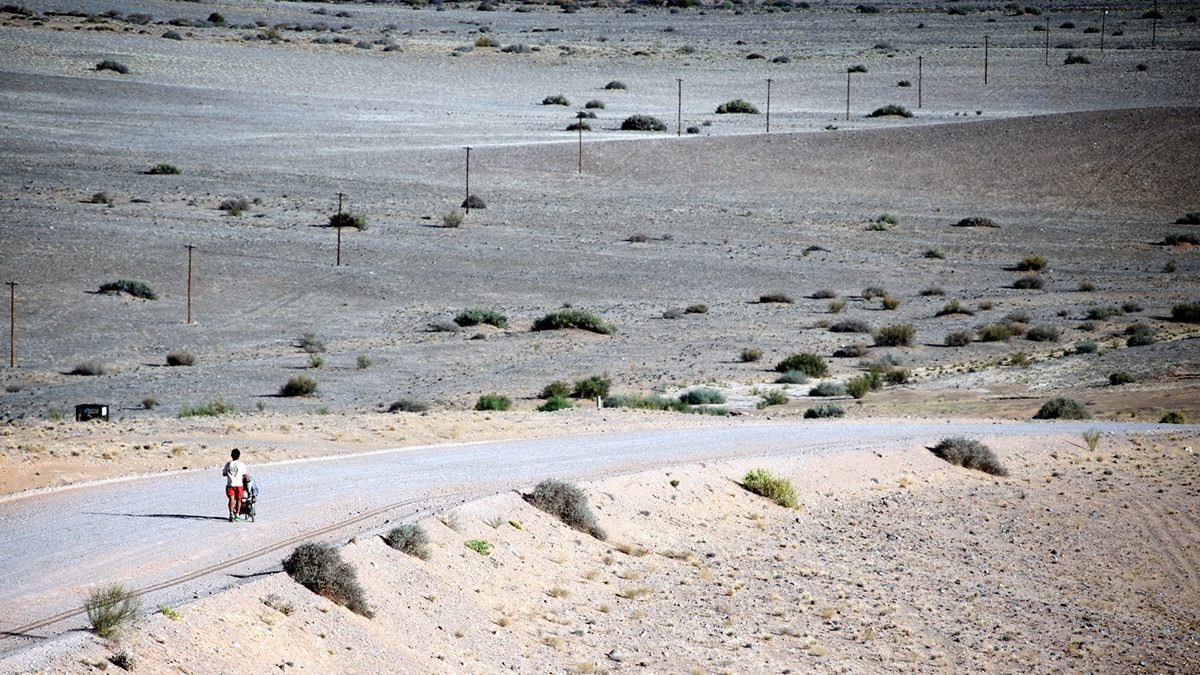

Asked how difficult it was promoting Penguin conservation in the middle of the desert?
"Quite! although I am hoping that this will become easier as i get closer to the coast in South Africa"
During my time in Namibia, I took a side track and headed to the Etosha National Park, a unique park surrounding a large salt pan in Northern Namibia. It is a landscape such as this one, that the importance of water on the survival of many of the speices becomes clearly evident.

The first storm of the November wet season passes over the pan, bringing hope, but in the end delivering so little.

The contrast of seasonal change is viewed at its finest on the edges of the Etosha Pan. The end of the dry season in November, a lone Giraffe drinks from one of the few remaining natural water holes at the pans edge. Much debate remains around the artifical watering holes used to attract wildlife close to the viewing points.
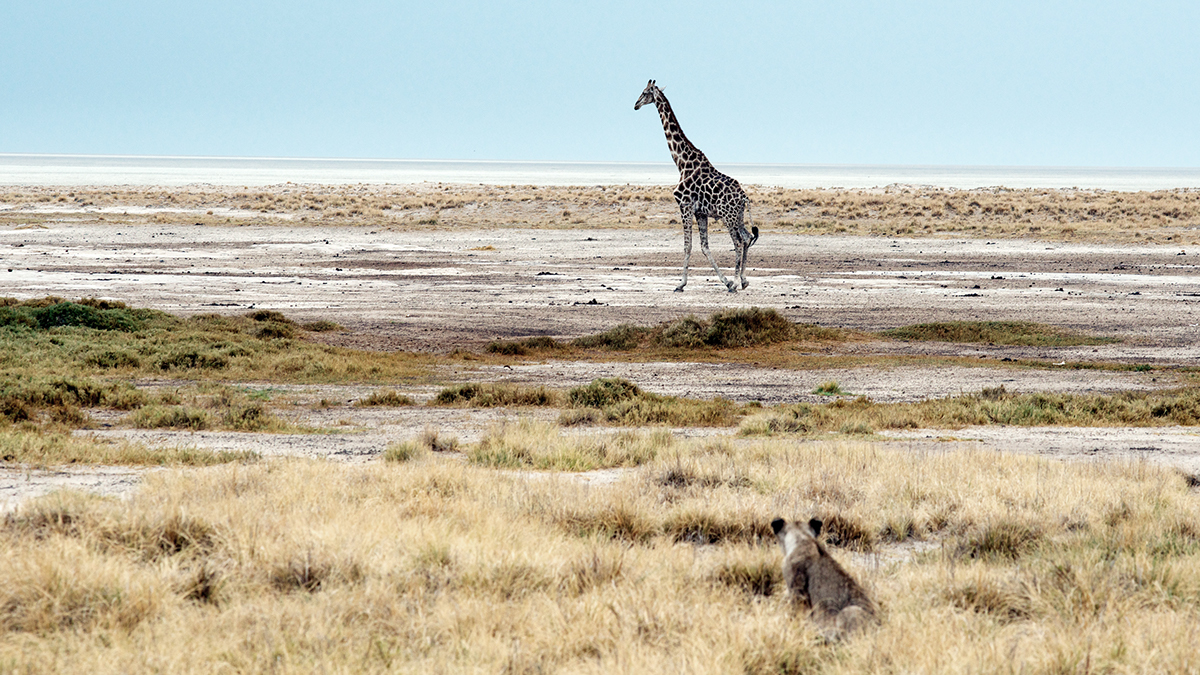
Obvious risks are encountered by wildlife needing the vital water from the last remaining water, although in this case, the lion cub is probably a little of its league.

It is estimated that a stable population of 400 individuals live within the park. Human-Wildlife conflict remains a problem on lands adjacent. Non profit ‚Africat‘, works to provide education, mitigation and support programs to local communities to reduce these conflicts.

Furthur to the South, and established in 1984 from former grazing land, the Namibrand Nature Reserve is now one of the largest private game reserves in Southern Africa. To date, thirteen livestock farms have been rehabilitated with the conservation funded through private tourism operators.

A small, limited number of private tourism operators pay concesions to use the Nature Reserve. Offering guests seclusion and private tours within its boundaries. Local farmers question the sustainability due to increases in water use given its scarcity.
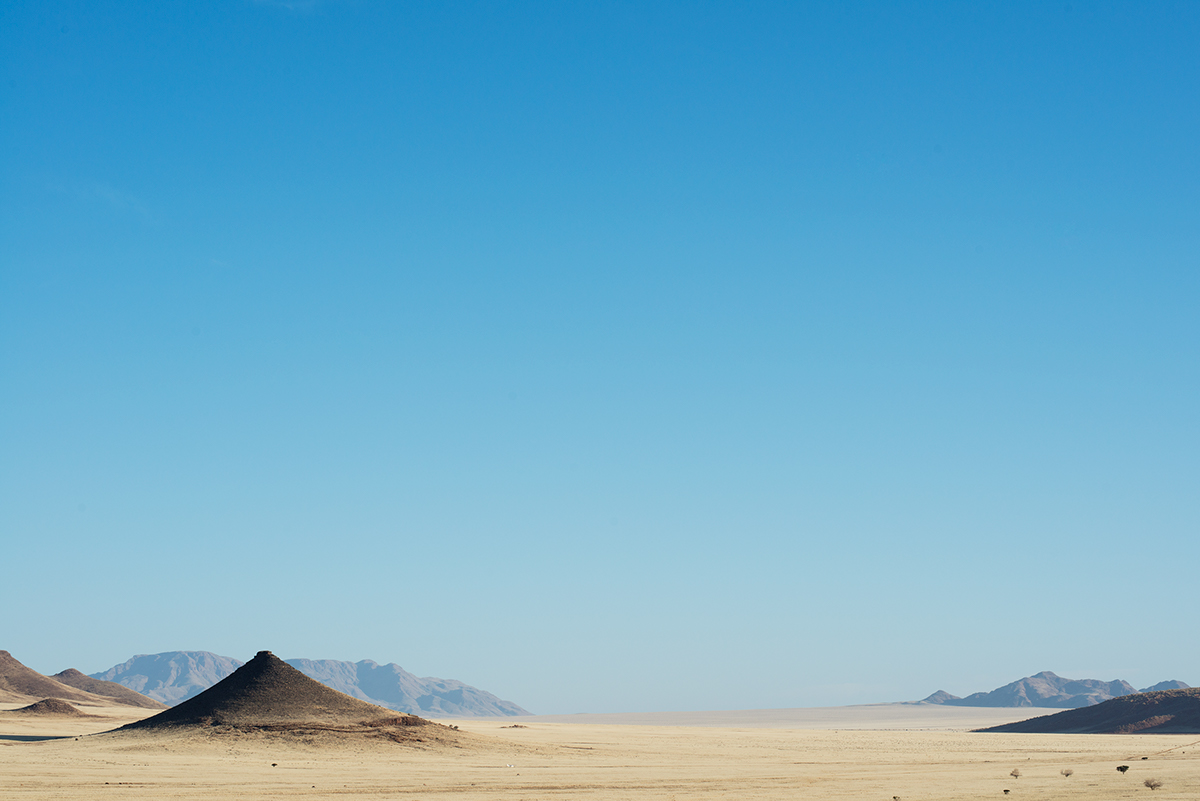
Open space, feeling of emptyness and stunning night skies bring tourism to this unique part of the world. The park has been proclaimed as Africa‘s first International dark sky reserve, meaning that it is one of the best places on earth to star-gaze.

Rather than lecture people about the penguin, Dave prefers to discuss human interactions with nature and leaving something positive for future generations. “I just want them to be able to enjoy the wild.” Promoting conservation in this part of the world is a difficult undertaking. You are generally talking to people who are really scraping by day to day. Conservation in that manner is a luxury of the middle and upper classes. “We have the luxury of choice, so I feel I personally should not be lecturing someone who’s life and impacts on the planet are far less than mine”.
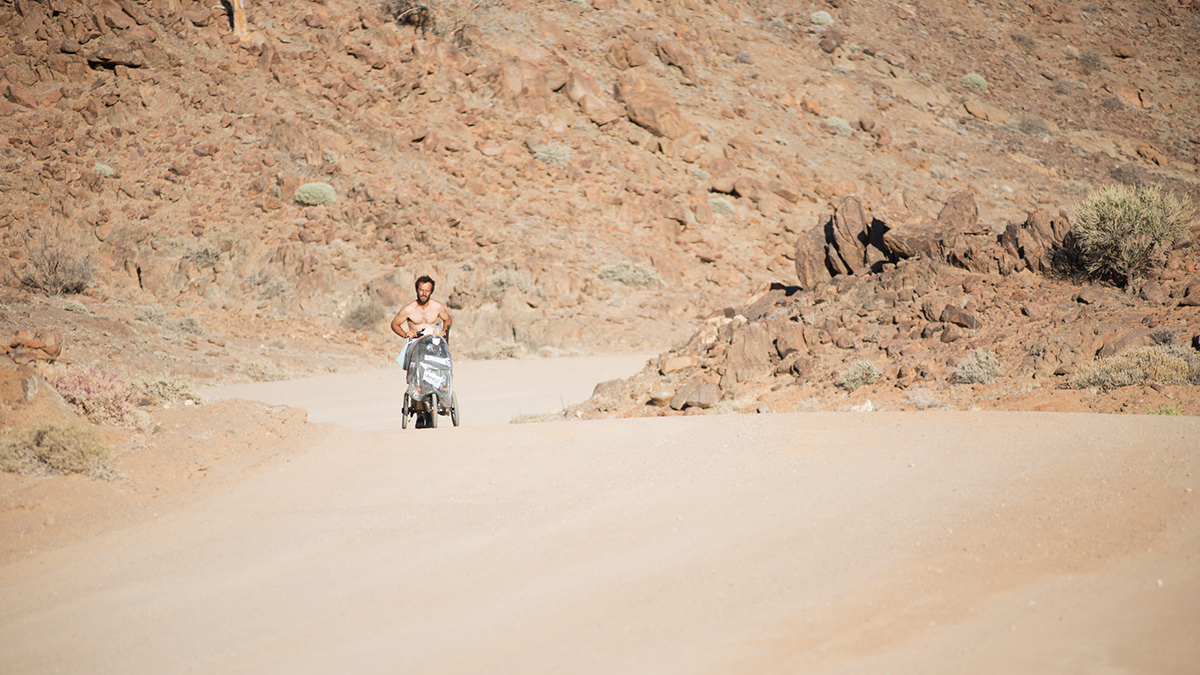

Popular tourist destinations such as Sossousvlei within the Namib-Naukluft National Park are vital to bringing Namibia much needed tourism dollars, and give the opportunity to climb the dunes which can reach 300m in height.

The 50,000km2 park is the fourth largest game reserve in the world. Recently declared a world heritage site,
The blackend scorched trees within Deadvlei ‚Dead Marsh‘ are believed to be over 900 years old.
The blackend scorched trees within Deadvlei ‚Dead Marsh‘ are believed to be over 900 years old.

This unique landscape and biodiversity make this area a paradise for nature lovers and photographers.
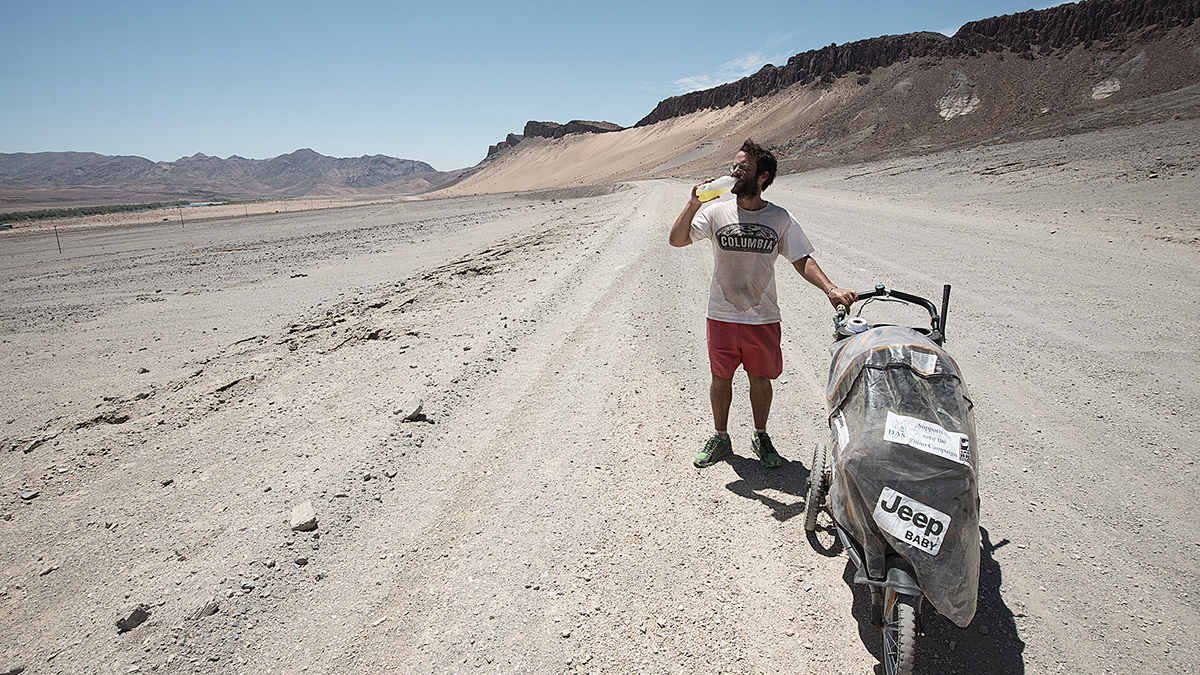
At one stage of the run, Dave’s only refuge for water turns out to be a farm reservoir. During a midday break, after chugging a litre and filling all his bottles, the farmer offers a swim in the reservoir to cool off. As he climbs in he discovers that his lovely supply of drinking water contains a number of half rotting birds. Quite ironic, Dave laughs, “What was suppose to bring them life has ultimately been what killed them”.

After 900km Dave entered the diamond mining belt of North Western South Africa and thats a whole other story in itself!
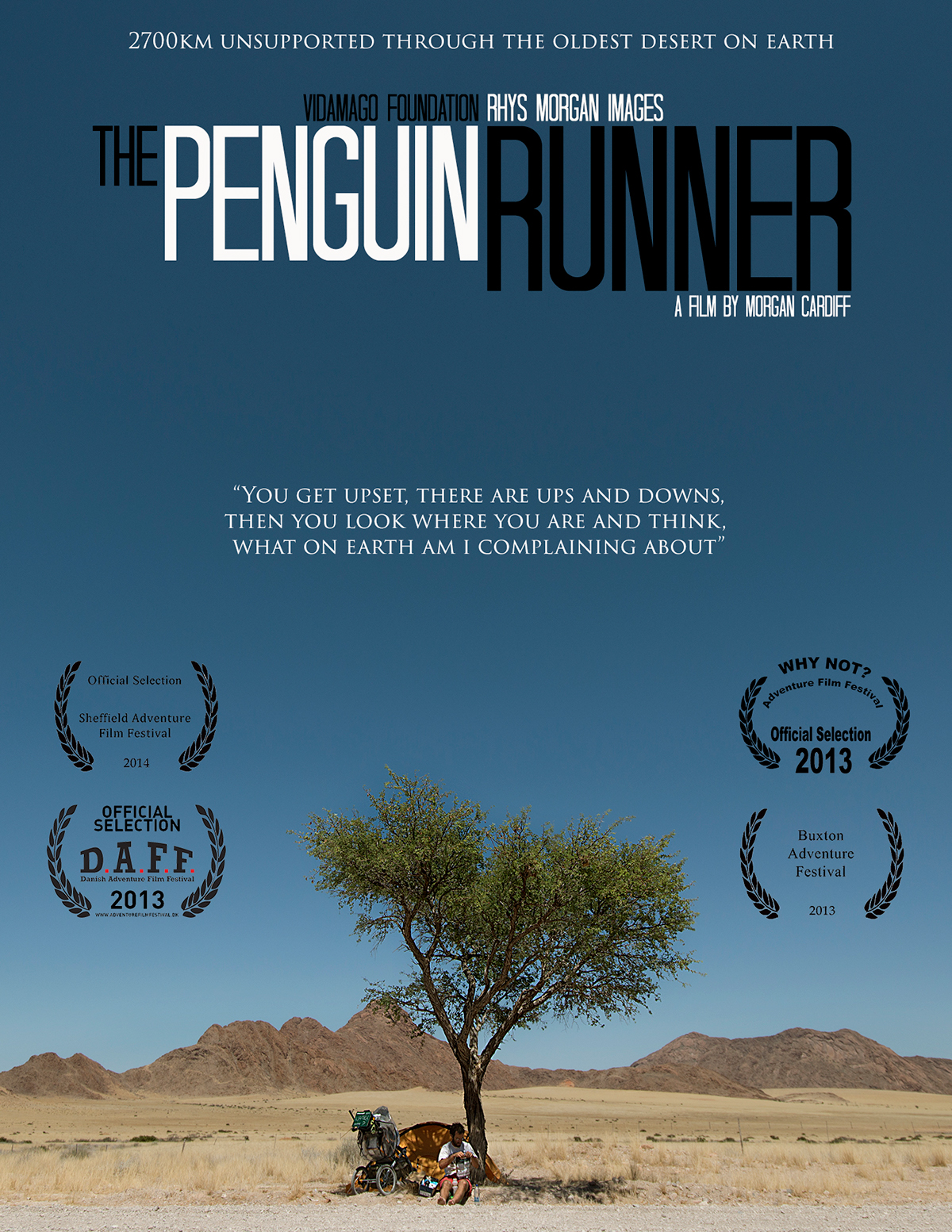
I knew when arriving in Namibia I was going to bear witness to a rather incredible feat. Travelling and camping beside Dave gave me an unparalleled insight into the mind and driving force behind his run. I had not, however, been prepared to discover the innate ability of a determined individual to not only physically deal with difficult situations, but to mentally dominate such adventures. To run 30km before 9 am, sit in a tent in 40-degree heat for 8 hours, and then proceed to run another 15-20km on consecutive days, week after week, is something only a dedicated few can achieve. Add to this a 30kg pram, soft sandy conditions, dust, wind, the risk of dehydration and wild animals, you are just starting to understand this adventure. His aims are to show people that anything is possible if you put your mind to it. “Yes, not everyone will be able to go to such extreme lengths, but that’s not important. Set a goal, no matter how big, and attempt to see it through. You will never regret that decision”.
For the Full story go to https://medium.com/p/70704ca7e7c3


